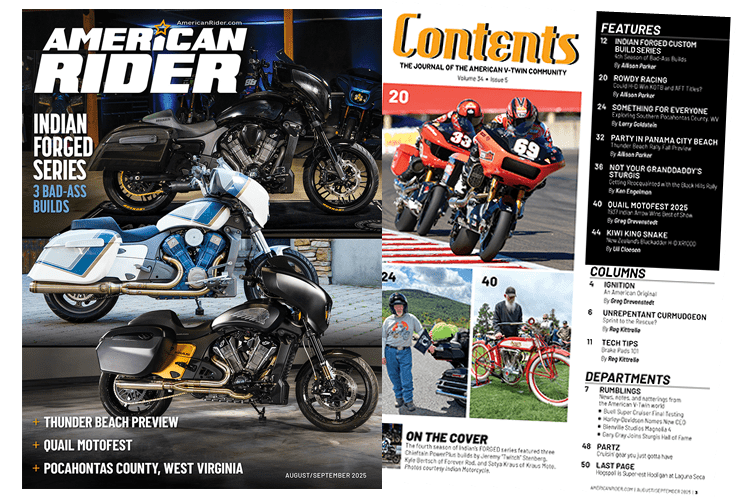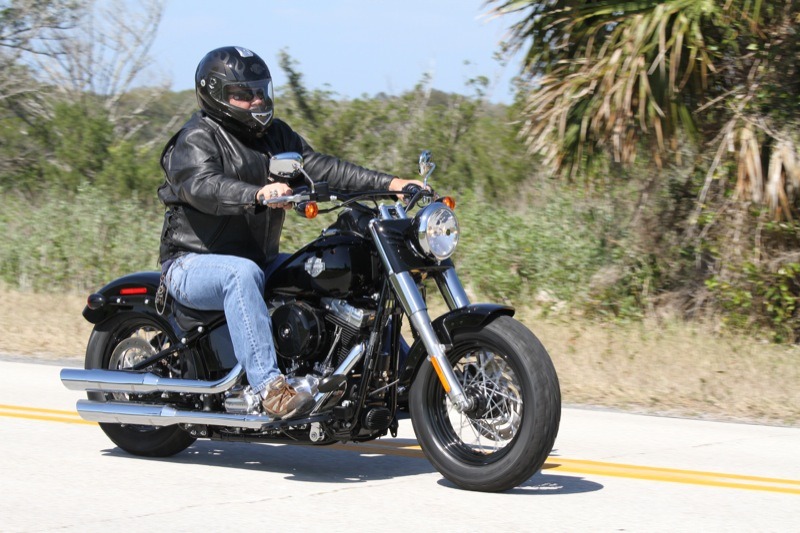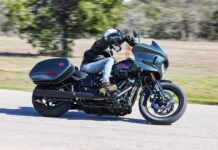Unless your name is Heritage, Fat Boy or Deluxe, life on the Softail platform can be brutish and short. Those are the sole models that have managed to survive the flux and turnover since 2009 when eight models filled out the roster. Cut from the lineup in the intervening years have been five models, and while two new specimens had been added—the Fat Boy Lo and Blackline—by the time the 2012 models were unveiled last July the platform had shrunk to just five bikes—the lowest count in a generation.

That state of affairs didn’t last long. Come February and Harley-Davidson’s now-traditional mid-year model release, there was a new Softail, the FLS Softail Slim, included to flesh out the fold. Considering that the last two Softails retired had been the platform’s most adventurous efforts, the Rocker C and Cross Bones, and considering that those models had never really caught fire in the marketplace as one would have hoped (or, in the case of the Cross Bones, at least, reasonably expected) it came as small surprise that Milwaukee played it safe with the Slim, digging into the platform’s roots, keeping things minimalist and hitting a relatively budget-minded price point.
That development process consisted of a trip to the Softail buffet where the designers loaded up on a heavy helping of Cross Bones (picking the Bones, so to speak). The exhaust system, black cat-eye dash, black-rimmed laced wheels, round black air cleaner, half-moon floorboards, round brake pedal pad and black-barreled engine finish are the signature elements repurposed from that model. Next came a scoop of FXS Blackline in the form of the basic rear fender and 144mm MU85B-16 rear tire it houses. And for a third course the Slim took the black headlamp and nacelle from the Fat Boy Lo, as well as its basic two-tone black/brite FL front end treatment.
To that foundation the designers added a few elements unique to the new machine, including a sleek pleated solo seat, cross-braced Hollywood-

style handlebar, stubby front fender and side-mount license plate frame.
And then they slammed the whole works. The Slim—which would be more aptly named the Softail Slam—sits lower to the ground than any of its Softail stable mates, both in terms of ground clearance of the undercarriage and operator height in the saddle—at a scant 23.8 inches, the Slim’s seat is a good half inch “Lo”er than the Fat Boy Lo. (Maybe rename it the Softail Loco?)
Overall, the FLS is a heavily derivative piece of work, but even so, it was a bike that was begging to be built. The objective, we’re told, was to create a bare-boned, no frills, slammed-not-glammed boulevard bruiser evocative of the post-war bobber treatments found in the popular imagination spinning donuts on San Benito Street in Hollister. Pretty much every component and finish choice on the bike serve that end nicely, right down to the simple understated Bar & Shield badge adorning the tank. (Milwaukee could have called it the Softail Hollister. Why not? They made a Daytona and a Sturgis, didn’t they?)

Also serving the model’s minimalist directive is its outfitting as a defiantly solo-rider mount. No pillion or passenger pegs are found here, and while you can add those parts yourself if it suits you, that would be missing the point altogether. (They could also have called it the Softail Loner, but that would have proven awkward when you were asked what you were riding and your response was misinterpreted as “a loaner.” Perhaps the Softail Solitaire?)
Once settled way down in the Slim’s saddle, the bike’s individuality emerges—first in the near view, where the black cat-eye dash, Hollywood handlebar clamped by short beefy chrome risers, and the gap between seat and fuel tank set it decidedly apart from its Softail sibs. And then there’s the ergonomics of the operator position. This is a roomy bike, a full-scale mount whose rear-positioned seat pocket, wide-spread footboards and flat handlebar welcome a rangy rider. Owing to its ground-hugging stance it can also accommodate shorter inseams—but not nearly as well as the Fat Boy Lo or Softail Deluxe.
In motion the perception of the bike is anything but slim. The perception is that of a solid substantial mount, a chunky low-slung nugget of

primal Softailism. The riding posture is one of lean forward and take charge. It’s a posture that suits the low-end surge of torque produced by the TC103B motor, the solid-mount, counterbalanced muscle that came to the entire Softail platform for 2012. It’s a highly-refined mill that pours on the power without a perceptible shudder or buzz.
Also highly refined are the hand control switches that came over to the Softails from the Dyna platform this year. They provide a positive quick-click feel, a flash-to-pass function on the dimmer switch, and a toggle function for scrolling through the menu of readout selections offered on the dash gauge. These include the odometer, a pair of trip meters, fuel range approximation, clock, gear indicator and tachometer.
It doesn’t take long aboard this bike to realize that it’s happiest running in a straight line. The combination of slammed chassis and outrigger half-moon footboards give the bike the most restricted cornering clearance of any Harley model, including the Fat Boy Lo and even the Sportster XL883 Superlow. It’s as low as you can go, but that’s scarcely newsworthy anymore on the Softail platform. The devil’s deal was cut some time back that sacrificed any pretense of cornering capability in exchange for drop-dead good looks and lowdown attitude. That’s what you’re paying for, and knowing the limitations going in, opting for any current Softail is to tacitly accept the likelihood of getting burned in the corners by an Ultra Classic rider checking his text messages.

Taken in its entirety, the Softail Slim may not be among Milwaukee’s most innovative efforts, but there’s no denying that it fulfills its stripped-down assignment handsomely, and with a good deal of personality. There’s a whole lot to like about this bike: I like its looks, particularly those elements sourced from the Cross Bones, and I like its low-slung go-to-hell stance. I like the operator ergonomics and its rumbling, brawling street presence. About the only thing I don’t like, as you may have gathered by now, is the name Slim. Whatever else it may be, this bike ain’t that. Sure, it’s 25 pounds lighter than the Deluxe, but it’s still 30 pounds heavier than the Blackline. So it’s not a weight issue. Is it the relatively slender MU85 rear tire that earns it that description? There’s reason to suspect that based on Harley’s characterization of the rear end as “narrow,” but that’s hardly the model’s distinguishing characteristic any more than it is on the Deluxe or Blackline, both of which sported that rubber before the Slim came along.
There’s another possibility, though it’s a bit of a stretch. With its ground-hugging profile, two-tone FL forks and dark complexion, the most immediate comparisons of the Slim were to the like-styled Fat Boy Lo—so much so that the name “Fat Boy Slim” jumped to the mind of many when the model was unveiled, and it’s in that association that the mystery of the “Slim”
handle might be unraveled. Here’s my theory:
After eliminating all other possibilities, I’m convinced that the subtle marketing minds of Milwaukee had a sort of dog whistle intent here, one that pricks the ears of the 30–45 year-old “younger core” consumers the model is being targeted at. That’s the cohort who spent the ’90s geeked on ecstasy and dervishing to the strains of British big-beat rocker Fatboy Slim’s big hit, “Rockafeller Skank.” Remember, kids? Right about now, the funk soul brother. Check it out now, the funk soul brother. Those were good times.
Look, I said it was a stretch…
The FLS Softail Slim is available in the Vivid Black shown here for $15,499, as well as in both Black Denim and Ember Red Sunglo for $15,884.



















I just picked up my new 2014 Slim and it’s everything you said and much more. I Love It.